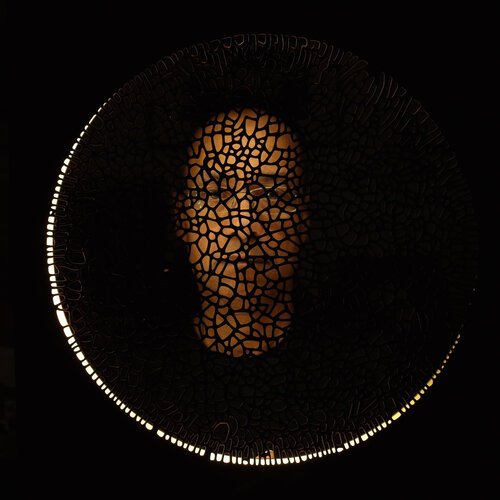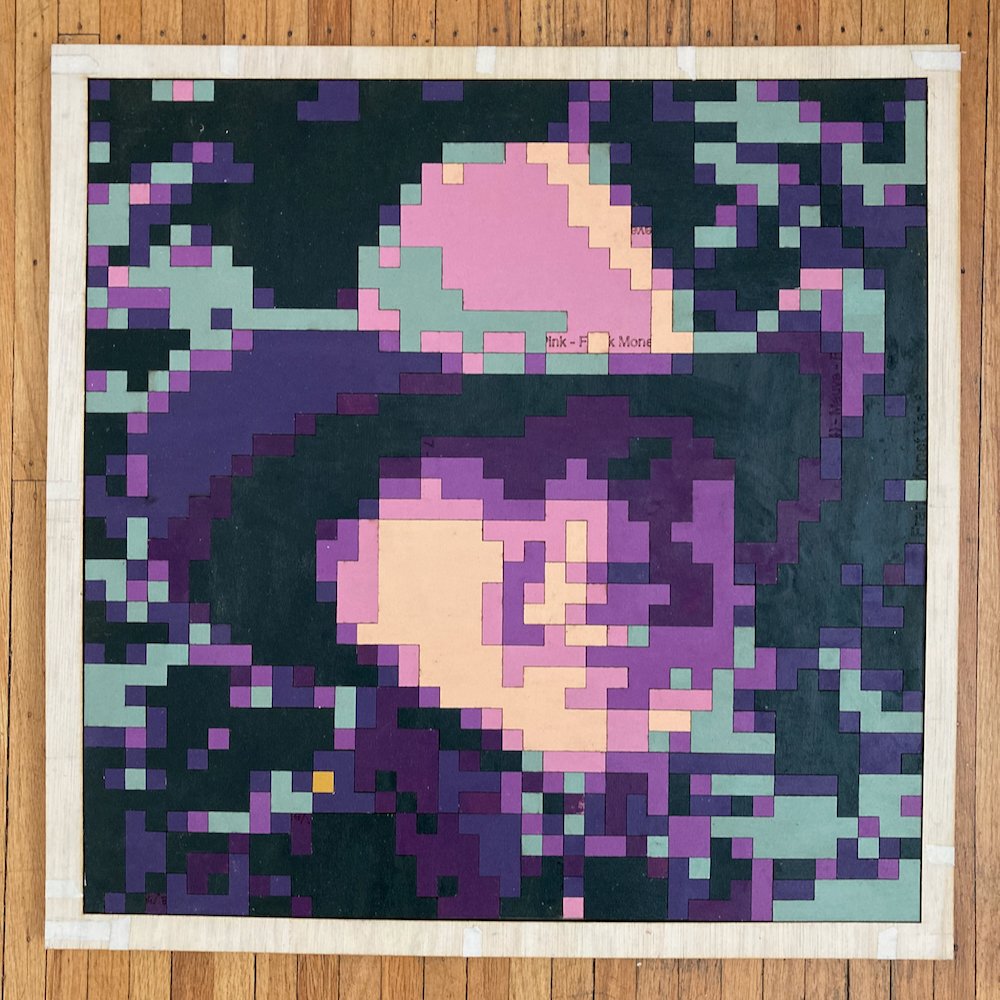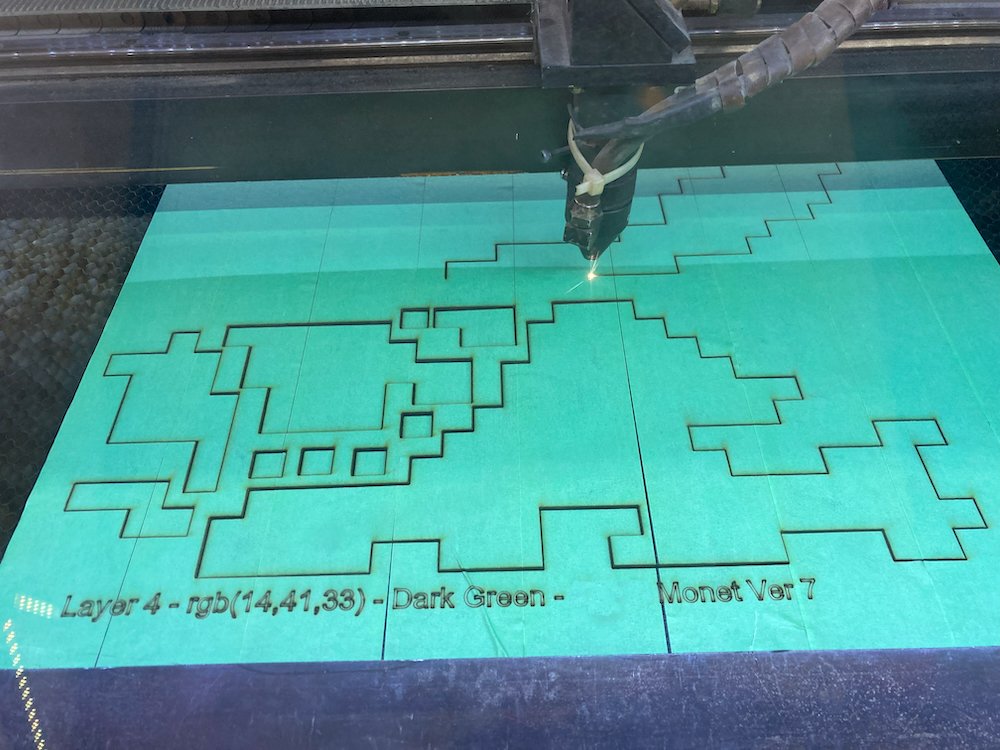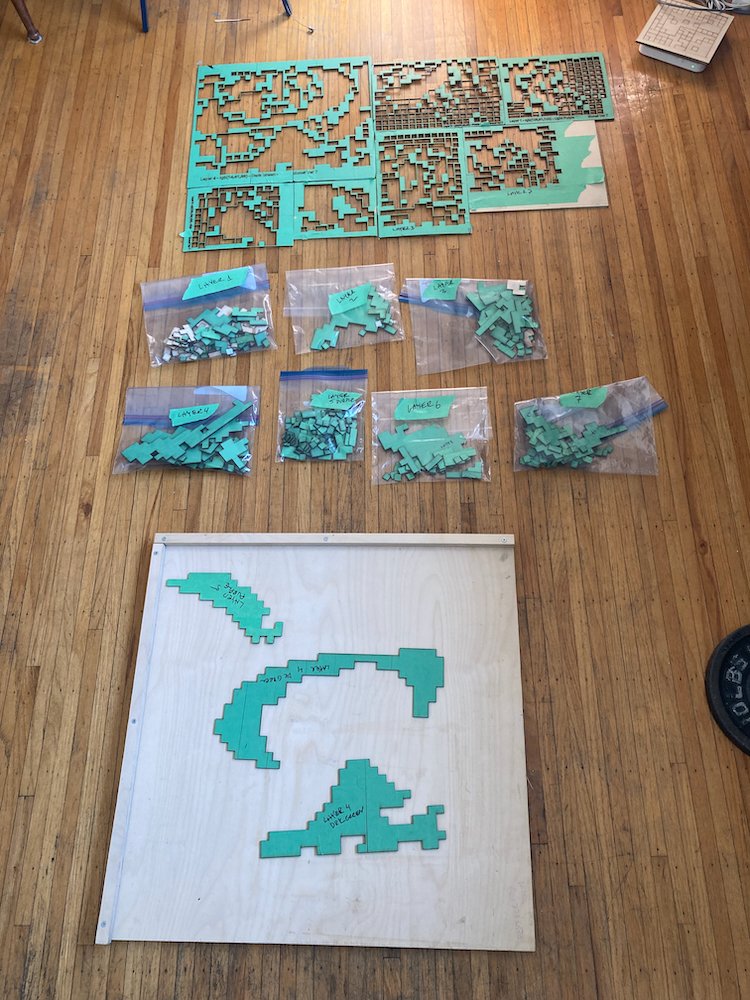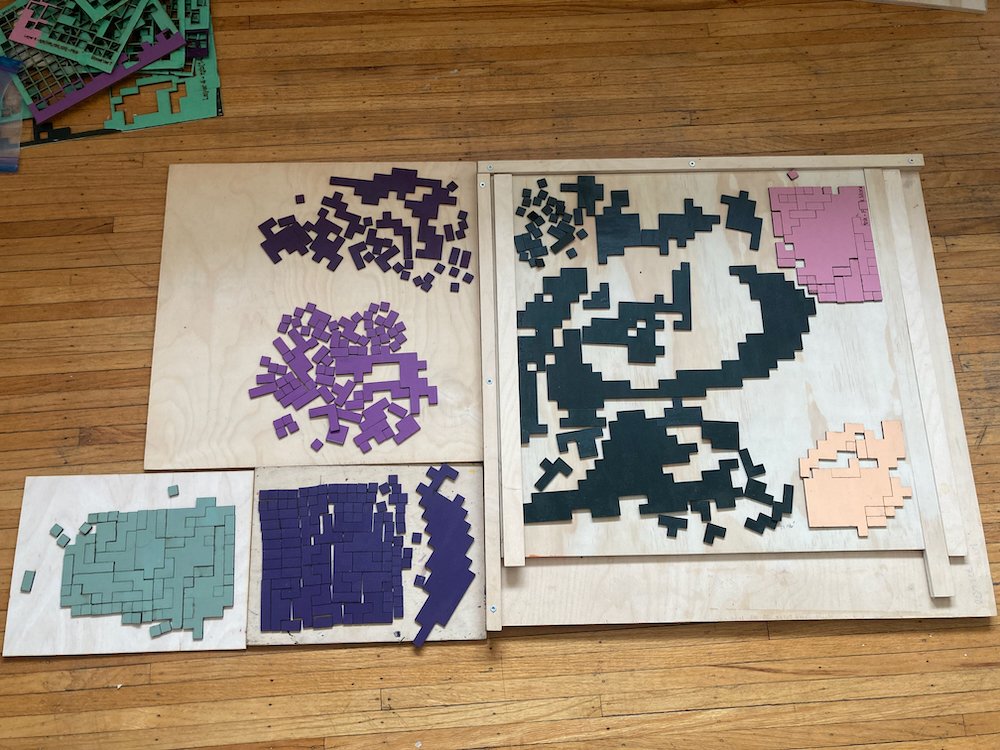I’ve been exploring creating mosaics these past two years. This second 20”x20” mosaic was created from a photo of a friend of mine wearing a cowboy hat. The mosaic colours were chosen from a palette that Monet used in his garden paintings. A significant amount of time is spent photo editing and choosing the best colours to achieve the artistic result I am looking for. There were seven versions that I experimented with before settling on this particular version.
My process, as usual, is technical. It took about 4 months to write an application to convert photographs into a mosaic using a specified set of colours.
Hand assembling a 1600 or 3600 piece tile is time consuming (40+ hours) so this application was modified to consolidate all contiguous tiles of the same colours into one shaped “tile”. This results in large reduction of assembly time.
Each 1/8” thick Baltic Birch panel is painted with acrylic paint for the specific chosen colour in the mosaic. “Tiles” are then cut out using a laser cutter. Each panel is covered in green tape before cutting to prevent smoke damage from the laser. This tape is peeled after laser cutting.
Next comes the hand assembly. Each tile is glued in its correct place using wood glue to the wooden base. The assembly process takes place over three days.
Assembly of Mosaic.
Included here are some of the “boring" technical details for those who may be interested. I used the creation of my Mosaic Photo Application as an opportunity to learn a new programming language called Rust Programming language. This particular language has a steep learning curve and it took about me about four months before I had anything useful. Developing this application using Python would have been much faster. My contiguous tiles modification involved learning edge tracing, bin packing, depth first searching, and a deep dive into the SVG specification. This modification took another three months of development effort.
